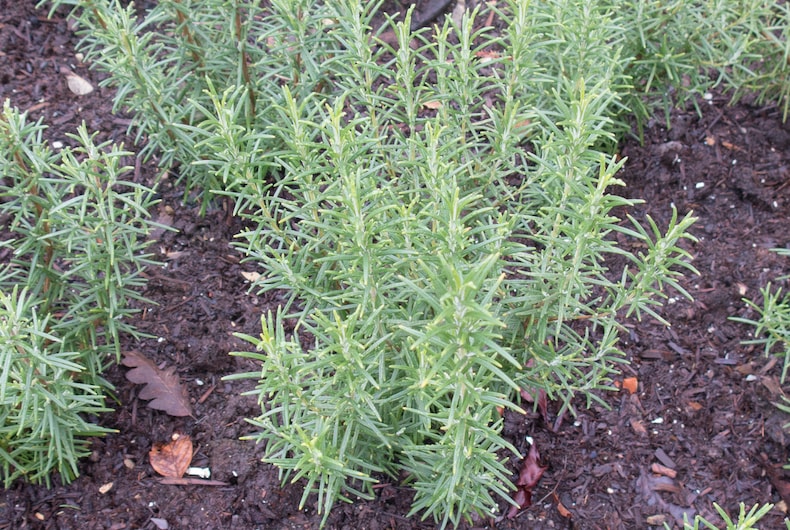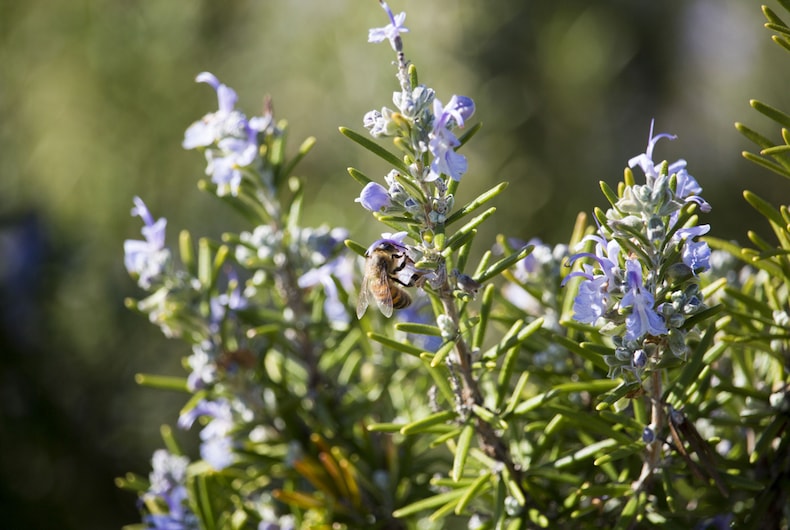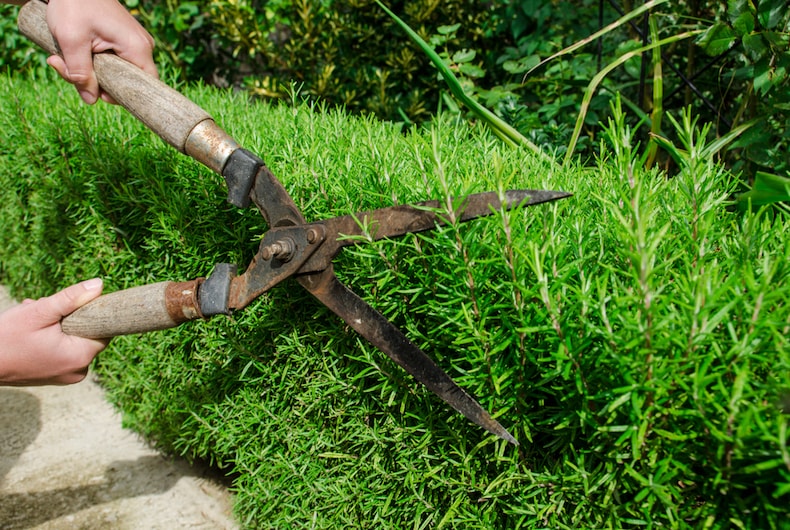
How to prune rosemary
Rosemary is one of those great all-round evergreen herbs - a must-have in the kitchen and pretty enough to make an ornamental plant in the garden with its delicate flowers in shades of white, pink or blue. Leave it untouched, and it can soon get too big and woody. But prune it carefully and your rosemary bush will reward you handsomely with years of fragrance and flavour.
Different types of rosemary

This upright variety can grow up to 2m tall
Image: Rosemary 'Miss Jessop's Upright' from Thompson & Morgan
Rosemary plants fall into three main categories:
- Prostrate grow low to the ground, cascade over walls and make excellent ground cover.
- Upright can be clipped into hedges or grown against walls and fences.
- Arching forms are somewhere between the two.
Pruning is used to restrict the size of the plants and to help them keep their shape, especially if they’re being used as a formal hedge. It’s also important for encouraging the production of new growth, which gives the best flavour in cooking. Leave a rosemary bush without pruning and in a few years you will have a bare and leggy bush with no fresh shoots.
When should I prune my rosemary bush?

Prune your rosemary bush once it has finished flowering
Image: alybaba/Shutterstock
The best time to prune rosemary is in late spring, just after it finishes flowering. This gives any subsequent new growth time to harden off before the winter frosts.
How do I prune my rosemary bush?

Take care not to prune your rosemary back too far
Image: KavardakovA/Shutterstock
Use sharp secateurs to deadhead the flowers, and then shorten any long stems using loppers, taking them back to a main stem or low set of leaves. The most important thing is to not cut back too far. Like its Mediterranean cousin lavender, rosemary does not regrow from old wood.
Let a rosemary bush have its head, and it’s extremely difficult to bring it back. Once a plant has got either too big or too leggy, it’s best to start again rather than trying to rejuvenate it. Either buy a new plant, or raise your own from cuttings.
Find more great herb growing advice and expert tips at our hub page.
See all pruning guides
Individual guides
Flower & Shrubs
- Pruning Buddleja
- Pruning Camellias
- Pruning Clematis
- Pruning Fuchsias
- Pruning Hydrangeas
- Pruning Hypercium - St Johns Wort
- Pruning Lavender
- Pruning Magnolias
- Pruning Passion Flowers
- Pruning Rhododendron
- Pruning Ribes Sanguineum
- Pruning Roses
- Pruning Tree Peonies
- Pruning Wisteria
- Pruning Asparagus
- Pruning Blueberries
- Pruning Goji Berries
- Pruning Honeyberries
- Pruning Raspberries
- Pruning Apple trees
- Pruning Box and Yew trees
- Pruning Catalpa trees
- Pruning Christmas trees
- Pruning Olive trees
- Pruning Patio Fruit trees
- Pruning Pear trees
- Pruning Plum trees
Fruit & Veg
Trees

Written by: Mandy Bradshaw, the Chatty Gardener
Cotswold-based Garden Media Guild member, Mandy Bradshaw, is also known as the Chatty Gardener. Passionate about gardening and writing, her beginnings are in football reporting for her primary school, and Mesembryanthemum planting with her mother. Winner of the 2018 Property Press Awards 'Garden Journalist of the Year', she writes for not only her own blog but also a range of newspapers, magazines and other gardening and non-gardening sites.Banner image: Elena Efimova/ Shutterstock
Sign Up For Exclusive Special Offers




© 2024 Thompson & Morgan. All rights reserved. A division of Branded Garden Products Limited.



